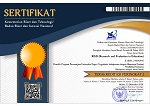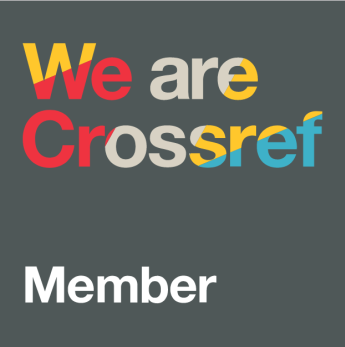The effectiveness of English teaching program in senior high school: A case study
DOI:
https://doi.org/10.21831/reid.v1i2.6666Keywords:
Program effectiveness, program objectives, students' needs and barriers, teaching methods, teaching materialsAbstract
References
Arends, R., I. & Kilcher, A. (2010). Teaching for student learning. Becoming an accomplished teacher. New York: Routledge.
Cambridge Advanced Learner's Dictionary (10th ed.)(2000). London: Cambridge Press
Chris, K. (2009). Effective teaching in schools: Theory and practice (3rd Ed.). England: Thornes Ltd.
Farooq, M. & Aslam, K., M.(2011). Impact of training and feedback on employee performance. Far East Journal of Psychology and Business, 5(1), 23-33.
Fernandez, H.J.X. (1984). Evaluation of educational programs. Jakarta: National educational planning, evaluation and curriculum development.
Fterniati, A. & Spinthourakis, J. A. (2006) National curriculum reform and new elementary school language arts textbooks in Greece. International Journal of Learning, 13(4), 1-11. Retrieved on August 8th, 2014. From: http://www.elemedu.upatras.gr/english/images/afterniati/NationalCurriculumReformandNewElementarySchoolLanguageArtsTextbooksinGreece.pdf
IDEA Center (2002). Some Thoughts on Selecting IDEA Objectives. Retrieved on November 12th, 2014 from: https://txwes.edu/media/twu/content-assets/images/faculty-and-staff/idea-survery-information/SOME-THOUGHTS-ON-SELECTING-IDEA-OBJECTIVES.pdf
Kaufman, R. & Thomas, S. (1980). Evaluation without fear. New York: New Viewpoints.
Lynch, B.K. (1996). Language program evaluation: Theory and practice. Cambridge: Cambridge University Press.
Mardapi, D. (2008). Teknik penyusunan instrument tes dan non tes. Yogyakarta: Mitracendekia Press.
McDavid J.C. & Hawthorn L. R. L. (2006). Program evaluation and performance measurement. An Introduction to Practice. USA: SAGE Publications, Inc.
Miles, M.B. & Huberman A.M. (1994). Qualitative data analysis: An expanded sourcebook (2nd ed.). Thousand Oask, CA: SAGE Publications.
Moore, K.D. (2009). Effective instructional strategies. From theory to practice (2nd ed.). USA. SAGE Publications, Inc.
Nuh, M. (2013). The future of this nation depends on th new curriculum. The Jakarta post. Retrieved on August 8th, 2014. From: http://www.thejakartapost.com/news/2013/02/19/future-indonesia-depends-new-curriculum-minister.html.
Sanders, J.R. & Sullins C.D. (2006:1). Evaluating school programs. An educator's guide (3rd ed.). Thousand Oaks, California: Corwin Press, SAGE Publications Company.
Stufflebeam, D. L., & Shinkfield, A. J. (1985). Systematic evaluation. Boston: Kluwe-Niljhoff Publishing.
Suleman, Q., Aslam H. D. & Hussain I. (2014). Effects of classroom physical environment on the academic achievement scores of secondary school students in kohat division, Pakistan. International Journal of Learning & Development, 4(1), 71-82.
Wati, H. (2011) The effectiveness of Indonesian English teachers training programs in improving confidence and motivation. International Journal of Instruction, 4(1), 79-104.
Wei, L. S. (2011). Relationship between students' perceptions of classroom environment and their motivation in learning English language. International Journal of Humanities and Social Science, 1(21), 240-250.
Zhang, G., Zeller, N., Griffith, R., Metcalf, D., Williams, J., Shea, C. & Misulis, K. (2011). Using the context, input, process, and product evaluation model (cipp) as a comprehensive framework to guide the planning, implementation, and assessment of service-learning programs. Journal of Higher Education Outreach and Engagement, 15(4), 57-83.
Downloads
Published
How to Cite
Issue
Section
Citation Check
License
The authors submitting a manuscript to this journal agree that, if accepted for publication, copyright publishing of the submission shall be assigned to REID (Research and Evaluation in Education). However, even though the journal asks for a copyright transfer, the authors retain (or are granted back) significant scholarly rights.
The copyright transfer agreement form can be downloaded here: [REID Copyright Transfer Agreement Form]
The copyright form should be signed originally and sent to the Editorial Office through email to reid.ppsuny@uny.ac.id

REID (Research and Evaluation in Education) by http://journal.uny.ac.id/index.php/reid is licensed under a Creative Commons Attribution-ShareAlike 4.0 International License.







.png)





